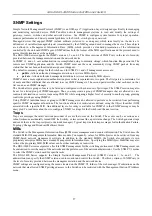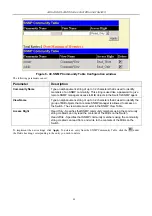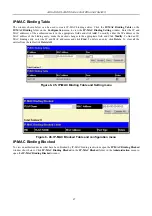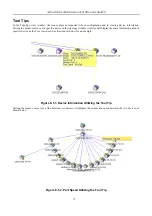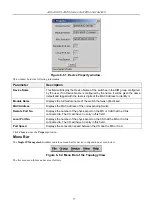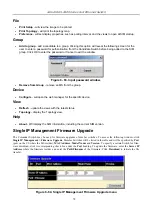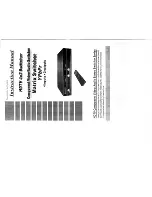
xStack DGS-3400 Series Fast Ethernet Switch
Single IP Management (SIM) Overview
Simply put, D-Link Single IP Management is a concept that will stack switches together over Ethernet instead of using
stacking ports or modules. There are some advantages in implementing the "Single IP Management" feature:
1. SIM can simplify management of small workgroups or wiring closets while scaling the network to handle
increased bandwidth demand.
2. SIM can reduce the number of IP address needed in your network.
3. SIM can eliminate any specialized cables for stacking connectivity and remove the distance barriers that typically
limit your topology options when using other stacking technology.
Switches using D-Link Single IP Management (labeled here as SIM) must conform to the following rules:
SIM is an optional feature on the Switch and can easily be enabled or disabled through the Command Line Interface or
Web Interface. SIM grouping has no effect on the normal operation of the Switch in the user's network.
There are three classifications for switches using SIM. The
Commander Switch (CS)
, which is the master switch of the
group,
Member Switch (MS)
, which is a switch that is recognized by the CS a member of a SIM group, and a
Candidate
Switch (CaS)
, which is a Switch that has a physical link to the SIM group but has not been recognized by the CS as a
member of the SIM group.
A SIM group can only have one Commander Switch (CS).
All switches in a particular SIM group must be in the same IP subnet (broadcast domain). Members of a SIM group cannot
cross a router.
A SIM group accepts up to 32 switches (numbered 1-31), not including the Commander Switch (numbered 0).
There is no limit to the number of SIM groups in the same IP subnet (broadcast domain), however a single switch can only
belong to one group.
If multiple VLANs are configured, the SIM group will only utilize the default VLAN on any switch.
SIM allows intermediate devices that do not support SIM. This enables the user to manage switches that are more than one
hop away from the CS.
The SIM group is a group of switches that are managed as a single entity. The xStack DGS-3400 Series switch may take on
three different roles:
1.
Commander Switch (CS)
- This is a switch that has been manually configured as the controlling device for a
group, and takes on the following characteristics:
It has an IP Address.
It is not a command switch or member switch of another Single IP group.
It is connected to the member switches through its management VLAN.
2.
Member Switch (MS)
- This is a switch that has joined a single IP group and is accessible from the CS, and it
takes on the following characteristics:
It is not a CS or MS of another IP group.
It is connected to the CS through the CS management VLAN.
3.
Candidate Switch (CaS)
- This is a switch that is ready to join a SIM group but is not yet a member of the SIM
group. The Candidate Switch may join the SIM group of the xStack DGS-3400 Series switch by manually
configuring it to be a MS of a SIM group. A switch configured as a CaS is not a member of a SIM group and will
take on the following characteristics:
It is not a CS or MS of another Single IP group.
It is connected to the CS through the CS management VLAN
The following rules also apply to the above roles:
•
•
Each device begins in a Candidate state.
CS's must change their role to CaS and then to MS, to become a MS of a SIM group. Thus, the CS cannot directly be
converted to a MS.
68
Summary of Contents for xStack DGS-3427
Page 213: ...202...
Page 224: ...213 D Link D Link D Link D Link 095 744 00 99 http www dlink ru email support dlink ru...
Page 227: ...216...
Page 243: ...232 Ver 1 00...
Page 246: ......




